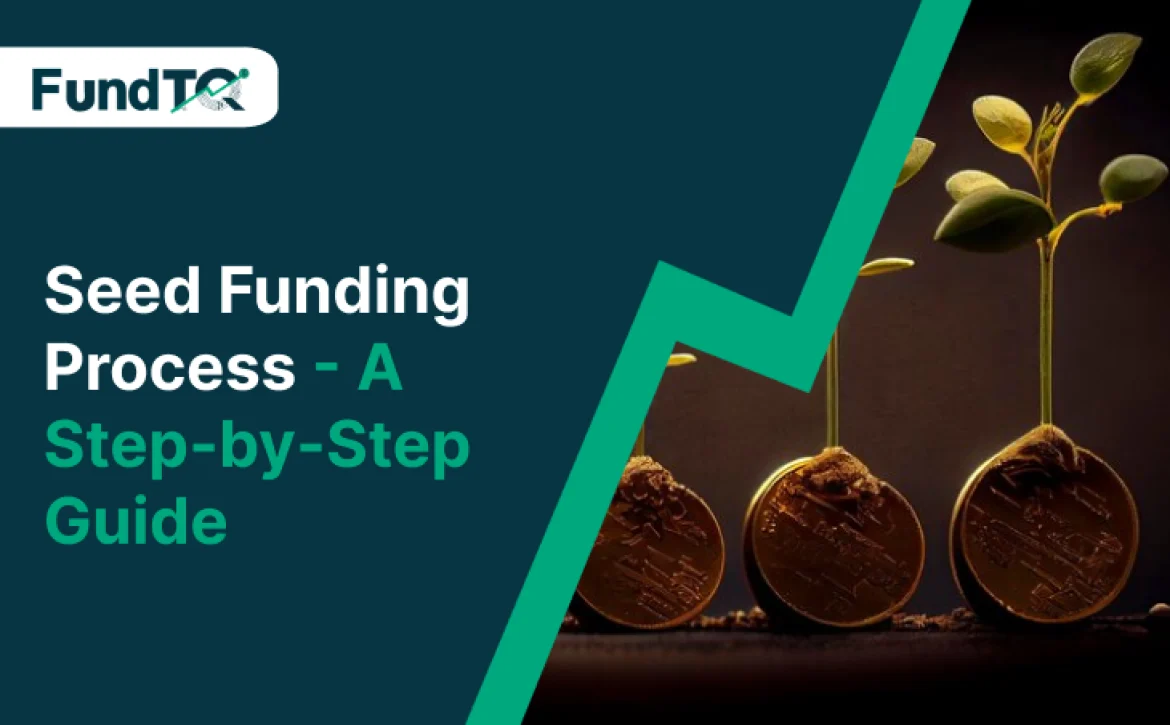Seed Funding Process – A Step-by-Step Guide
For early-stage startups, securing the right type of financing is critical to launching and scaling a business. One of the first major funding milestones for many startups is seed funding. This initial capital infusion helps founders bring their ideas to life, develop products, and grow their teams. But what exactly is the Seed Funding process, and how can startups navigate it successfully?
In this blog, we’ll break down the seed funding process step-by-step, giving you a clear understanding of how to raise capital and position your startup for success.
What is Seed Funding?
Seed funding is the initial round of capital raised by a startup to help develop its product or service and move toward market validation. Unlike later-stage funding, seed funding is typically used for early-stage business activities, such as market research, product development, and building a small team.
Seed investors can include angel investors, venture capital firms, or even friends and family. In exchange for capital, these investors often receive equity (ownership) in the company. The Seed Funding process can provide the essential resources your startup needs to grow from an idea to a fully functioning business.
Step-by-Step Seed Funding Process
Step-by-step process of raising seed funding:
1. Prepare Your Business Plan
Before seeking seed funding, you need a solid business plan. This document will outline your startup’s vision, mission, business model, target market, and revenue potential. A well-written business plan makes it easier for investors to comprehend your objectives and your strategy for achieving them.
In your business plan, focus on these key areas:
– Problem and Solution: Define the problem your startup solves and how your solution is unique.
– Market Opportunity: Present data on the size of your target market and the demand for your product or service.
– Revenue Model: Explain how your startup will make money, including pricing, sales channels, and customer acquisition strategies.
2. Create a Strong Pitch Deck
A pitch deck is an essential tool in the Seed Funding process. This presentation provides potential investors with a high-level overview of your business and why it’s worth investing in. A strong pitch deck should include:
– Executive Summary: A brief overview of your company, product, and team.
– Market Analysis: Data on market size, growth potential, and key trends.
– Traction: Any existing progress, such as product development, customer acquisition, or partnerships.
– Financial Projections: Forecasts for revenue, expenses, and profitability over the next few years.
– Funding Needs: Clearly state how much capital you are raising and how it will be used.
3. Identify Potential Investors
Finding the right investors is a critical step in the seed funding process. Seed investors come from a variety of sources, including:
– Angel Investors: High-net-worth individuals who invest personal funds in startups.
– Venture Capital Firms: Some VC firms specialize in seed-stage investments, often focusing on high-growth industries.
– Crowdfunding Platforms: Online platforms like SeedInvest and Crowdcube allow startups to raise small amounts of money from a large number of individual investors.
– Friends and Family: In some cases, entrepreneurs turn to close connections for initial funding.
Make sure to target investors who have experience in your industry and are aligned with your vision. Personal introductions and networking can also play a significant role in securing meetings with potential investors.
4. Negotiate the Terms
Once you’ve secured interest from investors, the next step in the Seed Funding process is negotiating the terms of the deal. These terms typically include the amount of equity (ownership) you are offering in exchange for the capital. Other key aspects include:
– Valuation: How much your startup is worth before the investment.
– Investment Amount: The total capital investors will provide.
– Equity Stake: The percentage of ownership you’re offering in exchange for the investment.
– Board Involvement: Whether investors will take an active role in company decisions by joining your board.
It’s essential to work with a lawyer experienced in startup financing to ensure the terms are fair and legally sound.
5. Due Diligence
After negotiating the terms, investors will likely conduct due diligence to verify your claims and assess the potential risks of the investment. The due diligence process typically involves:
– Financial Review: Investors will review your financial statements, projections, and tax filings.
– Legal Review: Investors will want to see any contracts, intellectual property filings, and shareholder agreements.
– Business Model: Investors may evaluate your business model’s scalability and market fit.
Being transparent and prepared during due diligence can help expedite the process and build trust with potential investors.
6. Secure the Investment
Once due diligence is completed and both parties agree on the terms, the final step in the Seed Funding process is closing the deal. This involves signing the investment agreement, transferring the funds, and issuing shares to the investors.
At this point, you officially have the capital you need to execute your business plan and grow your startup. Make sure to communicate regularly with your investors and provide updates on your progress, as they can be valuable partners in your company’s growth.
Get funding advice from industry experts
Benefits of Seed Funding
– Access to Capital: Seed funding provides the capital needed to bring your product to market and grow your business.
– Mentorship: Many seed investors offer valuable guidance and industry expertise, helping you navigate challenges and scale effectively.
– Networking Opportunities: Investors often connect founders with other entrepreneurs, potential customers, and partners, accelerating growth.
Conclusion
Understanding the Seed Funding process is essential for any startup seeking early-stage capital. By preparing a strong business plan, creating a compelling pitch deck, identifying the right investors, and negotiating fair terms, you can successfully raise the funds needed to fuel your startup’s growth.
Seed funding is not just about money it’s about finding the right partners who believe in your vision and can help your business thrive.
Read Also: Ways of Fundraising

 Pitchdeck for D2C Food Brand looking for fundraising
Pitchdeck for D2C Food Brand looking for fundraising 